
Roots
From the earliest whispers of civilization, humanity has held a profound connection to hair. It is more than mere strands; it has always been a declaration, a silent language spoken across cultures and centuries. This deep, abiding relationship with our crowns, particularly for those with textured hair, holds echoes of ancestral wisdom that ripple into the present day.
We are not simply looking back at quaint practices; we are seeking the foundational understanding, the elemental truths about hair that our forebears intuitively grasped and that modern science now patiently uncovers. It is a quiet invitation to witness how ancient observation laid the groundwork for contemporary scientific inquiry, creating a bridge between the wisdom of the past and the precision of today.

The Intimate Structure of Hair
At its very core, hair is a complex biological marvel. Each strand, though seemingly simple, comprises distinct layers ❉ the outer cuticle, a protective shingle-like covering; the cortex, providing strength and color; and sometimes, a central medulla. Textured hair, with its unique helical shape, presents specific structural considerations. The twists and turns of its shaft mean more points where the cuticle can lift, leading to a greater propensity for moisture loss and breakage.
This inherent architecture dictates much of how textured hair behaves and, consequently, how it has been cared for across generations. Ancient peoples, without microscopes or chemical analysis, observed these characteristics through touch and daily interaction, adapting their practices accordingly. They noticed the fragility, the need for protection, and the way certain substances could alter its feel and appearance.
Consider the ancient Egyptians, who held hair in high regard, seeing it as a symbol of health and status. They utilized various natural ingredients for hair care, some of which we still find in modern formulations. Castor, sesame, moringa, and coconut oils were popular choices, used for their moisturizing properties. Modern scientific analysis confirms these oils possess fatty acids and other compounds beneficial for hair and scalp health.
For instance, Coconut Oil, with its lauric acid content, has a high affinity for hair protein and can penetrate the hair shaft, reducing protein loss from both damaged and undamaged hair. This historical preference for specific oils, based on centuries of experiential knowledge, now finds validation in biochemical studies that reveal their molecular interactions with hair proteins.
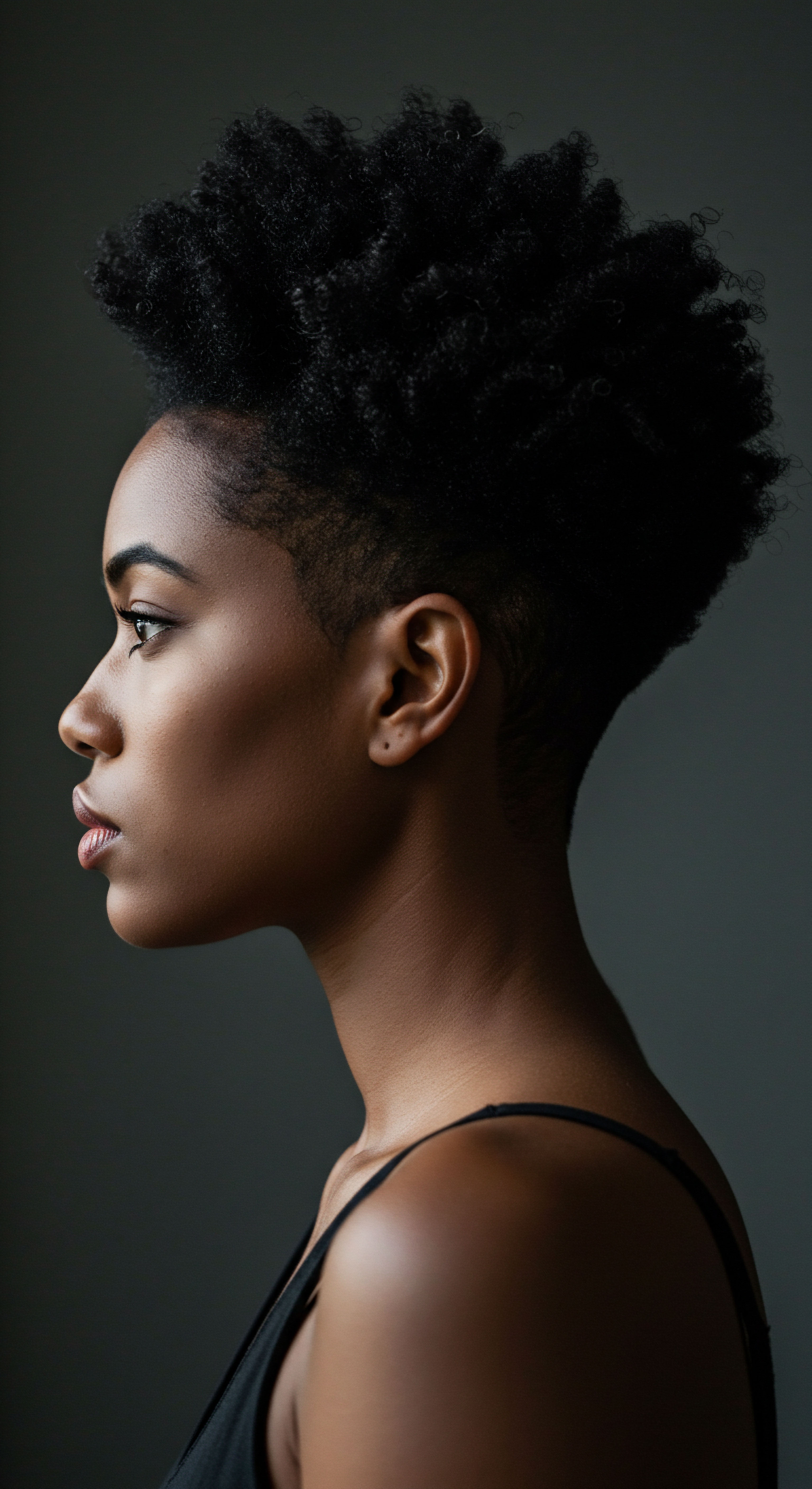
Hair’s Natural Cycle and Ancient Insights
Hair growth follows a cyclical pattern ❉ an active growth phase (anagen), a transitional phase (catagen), and a resting phase (telogen). Understanding these cycles, even without formal scientific terms, influenced historical hair care. Cultures recognized periods of vigorous growth and times when hair might shed more readily. Practices like gentle handling, protective styling, and scalp treatments were likely developed to support hair through these natural rhythms, minimizing damage during vulnerable stages.
Ancient observations of hair’s characteristics laid the groundwork for modern scientific understanding.
The longevity of certain hairstyles, such as braids or dreadlocks, in various African cultures, served not only aesthetic and social purposes but also practical ones. These styles could protect hair from environmental stressors and minimize manipulation, thereby reducing breakage and promoting length retention. While modern trichology provides the cellular and molecular explanations for why such practices are beneficial, the underlying principles of protection and minimal interference were discovered through generations of lived experience.
Here is a brief look at the foundational components of hair ❉
- Keratin ❉ The primary protein making up hair, providing its structural integrity.
- Melanin ❉ Pigments within the cortex responsible for hair color.
- Cuticle ❉ The outermost protective layer, composed of overlapping cells.
- Cortex ❉ The main body of the hair, containing keratin bundles and melanin.
- Medulla ❉ The innermost core, present in some hair types.
| Hair Component Cuticle |
| Modern Scientific Role Protective outer layer, influences shine and porosity. |
| Ancient Cultural/Practical Understanding Observed as the hair's "sheen" or "roughness," influencing choices of smoothing agents. |
| Hair Component Cortex |
| Modern Scientific Role Provides strength, elasticity, and holds pigment. |
| Ancient Cultural/Practical Understanding Understood as the source of hair's resilience or fragility; color variations noted for identity. |
| Hair Component Sebum (natural oils) |
| Modern Scientific Role Lubricates hair, maintains scalp health. |
| Ancient Cultural/Practical Understanding Recognized for keeping hair soft and manageable; prompted use of external oils. |
| Hair Component The empirical knowledge of ancient societies often mirrored later scientific discoveries about hair. |
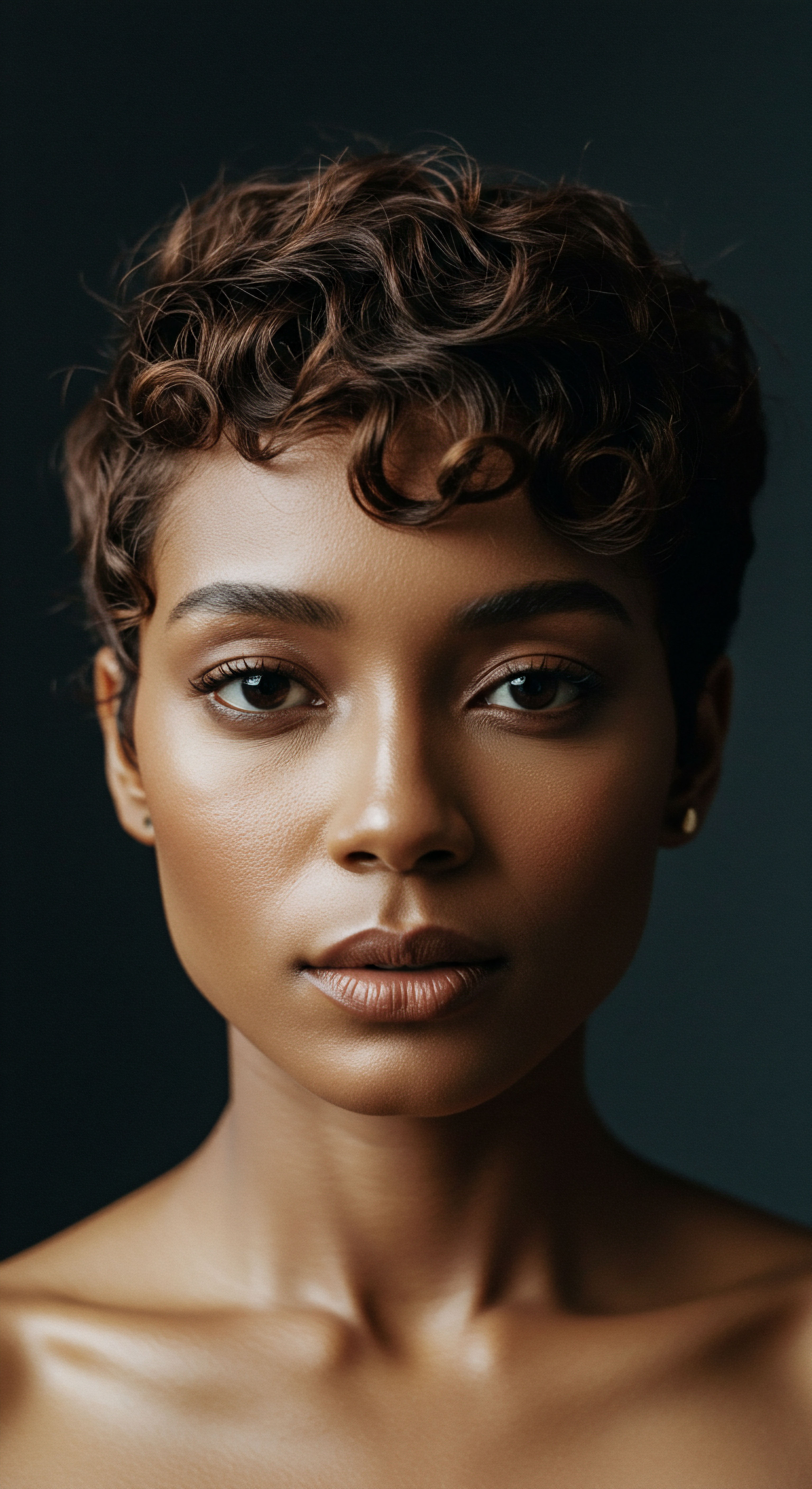
Ritual
As we move from the elemental understanding of hair’s composition, a gentle shift occurs toward the practices that have shaped its care through time. Consider the rhythmic application of oils, the patient creation of intricate patterns, or the thoughtful preparation of herbal rinses. These are not merely tasks; they are acts of devotion, passed down through generations, each movement carrying the weight of tradition and the quiet wisdom of those who came before. This section invites us to explore how these daily or periodic acts of tending to our hair, often steeped in cultural significance, hold practical insights that modern science now elucidates, transforming age-old customs into scientifically supported methods for radiant hair.
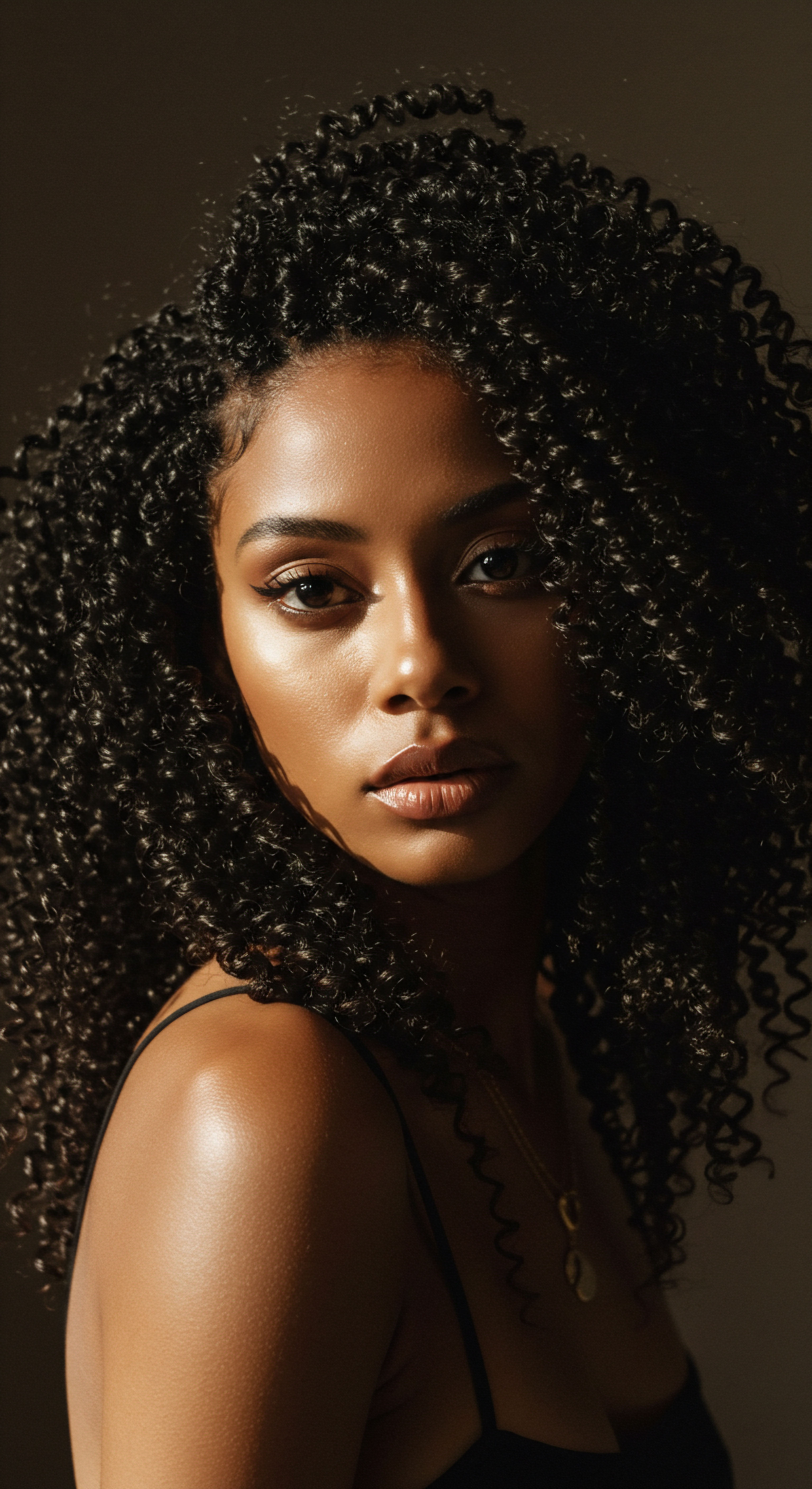
The Wisdom of Ancient Hair Cleansing and Conditioning
Long before commercial shampoos and conditioners lined our shelves, various cultures developed sophisticated methods for cleansing and conditioning hair. Many of these practices relied on natural ingredients with properties that modern chemistry now validates. For instance, the use of plant-based cleansers, often containing saponins, provided a gentle lather without stripping the hair’s natural oils.
Ayurvedic practices in India, dating back thousands of years, involved hair oiling as a regular ritual. This practice, known as ‘Sneha,’ meaning ‘to love’ in Sanskrit, involved massaging oils and herbs into the scalp and hair before washing.
Scientific studies now support the benefits of hair oiling. A 2003 study indicated that Coconut Oil, used as a pre-wash treatment, significantly protected hair against protein loss. This protection arises from coconut oil’s ability to penetrate the hair shaft, reducing hygral fatigue – the swelling and drying of hair that occurs with washing.
Other traditional oils, like amla oil, derived from the Indian gooseberry, have been studied for their potential to stimulate hair growth, reduce hair loss, and even delay premature graying due to their rich antioxidant and nutrient content. These ancient conditioning rituals provided nourishment and protection that science now quantifies at a molecular level.

Styling as Protection and Expression
Historical styling practices, particularly within textured hair communities, were rarely just about aesthetics. They served vital protective functions, shielding delicate strands from environmental damage, reducing manipulation, and maintaining moisture. Braiding, twisting, and coiling hair into elaborate styles was a widespread practice across African civilizations, often indicating a person’s tribe, age, marital status, wealth, or even religion. These styles, by minimizing exposure and tangling, helped preserve hair health over extended periods.
Traditional hair care rituals, often dismissed as folklore, frequently possess a strong scientific basis.
Yet, modern science also offers a nuanced perspective on some historical styling methods. While many protective styles are beneficial, certain applications, when performed with excessive tension, can lead to conditions like Traction Alopecia. This form of hair loss, caused by chronic pulling on hair follicles, is particularly prevalent among women of African descent who frequently wear tight braids, weaves, or cornrows.
A study published in the Archives of Dermatology indicated that nearly 60% of African American women surveyed showed signs of advanced central hair loss with scarring, often associated with tight styling. This contemporary understanding allows us to appreciate the historical artistry while also advocating for safer, healthier adaptations of these revered styles.
The ingenuity of ancient stylists extended to creating products to hold and shape hair. Ancient Egyptians, for instance, used fat-based substances, akin to modern hair gel, to style their hair and preserve intricate looks, even in mummification processes. Chemical analysis of mummy hair has revealed the presence of biological long-chain fatty acids, including palmitic and stearic acid, confirming the use of these “hair gels”. This demonstrates an early understanding of how lipids could provide hold and sheen, a principle still fundamental to many styling products today.

What Can Ancient Dye Practices Teach Us About Hair Chemistry?
The desire to alter hair color is not a modern phenomenon. Ancient civilizations used natural pigments from plants and minerals. Henna, derived from the Lawsonia plant, was a primary dye for ancient Egyptians, used to color hair black and cover grays, a practice still widespread today. Other cultures experimented with various plant extracts, like chamomile for lightening or indigo for darker shades.
The chemistry behind these natural dyes, while less understood in antiquity, is now clear. Henna, for example, binds to the keratin in the hair shaft, providing a lasting color. More controversially, the Romans and ancient Greeks experimented with lead-based formulas for black hair dye, a mixture of lead oxide and slaked lime.
Modern analysis shows this mixture reacted with sulfur in the hair’s keratin to form dark lead sulfide nanoparticles within the hair. This illustrates an early, albeit toxic, grasp of chemical reactions for cosmetic purposes, highlighting a direct lineage from ancient experimentation to modern cosmetic chemistry.
Common historical hair care ingredients and their modern scientific links ❉
- Henna ❉ Natural dye that binds to keratin.
- Plant Oils (coconut, castor, sesame) ❉ Provide fatty acids, penetrate hair shaft, reduce protein loss.
- Herbal Rinses (aloe vera, chamomile) ❉ pH balancing, soothing, anti-inflammatory properties.
- Clays ❉ Absorb excess oil, provide minerals.

Relay
Having explored the foundational elements and practical rituals, we now stand at the precipice of a deeper, more culturally attuned understanding of hair. How does the echoes of ancestral practices reverberate through the intricate pathways of our modern scientific comprehension? This section invites a reflective pause, a moment to consider the less apparent complexities where biological insights, psychological impact, social structures, and cultural narratives converge. Here, we delve into the profound insights that connect historical hair practices with the cutting-edge of scientific inquiry, moving beyond surface-level observations to a rich, multi-dimensional analysis supported by data and scholarly thought.
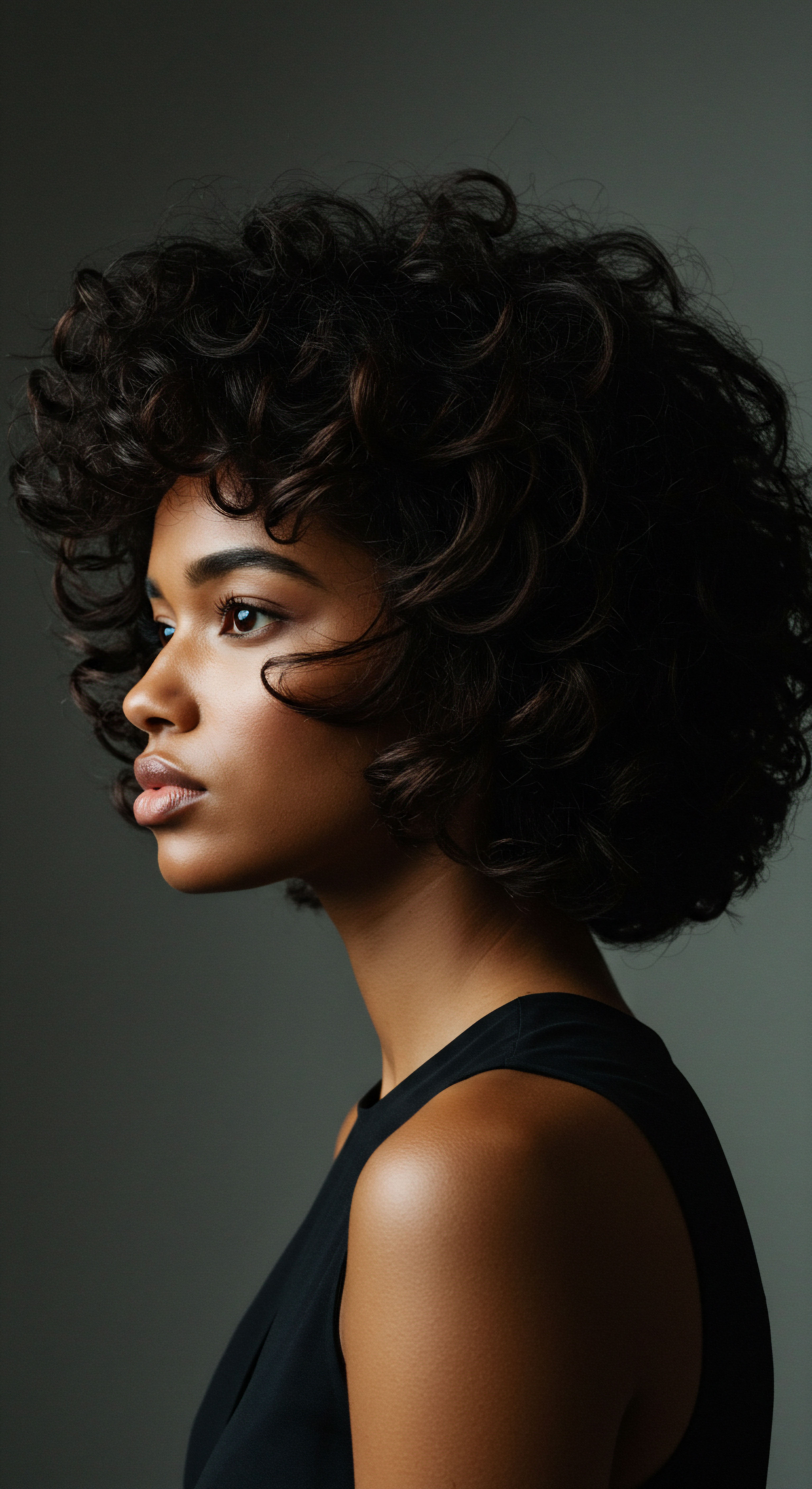
The Epigenetic Whispers in Our Strands
Beyond the physical attributes of hair, there lies a fascinating intersection with epigenetics, the study of how environmental factors and behaviors can cause changes that affect the way our genes work. While hair texture itself is largely genetically determined, the health and behavior of hair follicles can be influenced by long-term environmental stressors, nutrition, and even historical dietary patterns. Could the collective experiences of generations, particularly those marked by significant environmental shifts or nutritional challenges, leave an epigenetic mark on hair health and appearance? This is a frontier where historical observation meets contemporary biological investigation.
Consider the historical diets of various populations and their potential impact on hair composition. Societies that traditionally consumed diets rich in specific vitamins, minerals, and proteins often displayed hair characteristics that modern nutritional science links to those very nutrients. For instance, diets rich in iron, zinc, and biotin are known to support healthy hair growth and structure.
The persistent use of certain plant-based ingredients in historical hair care, such as those found in Ayurvedic traditions like Bhringraj and Amla, are now scientifically recognized for their nutrient profiles that promote hair health and melanin production, which prevents premature graying. These ancient practices, born from necessity and observation, align with modern understanding of cellular nutrition.
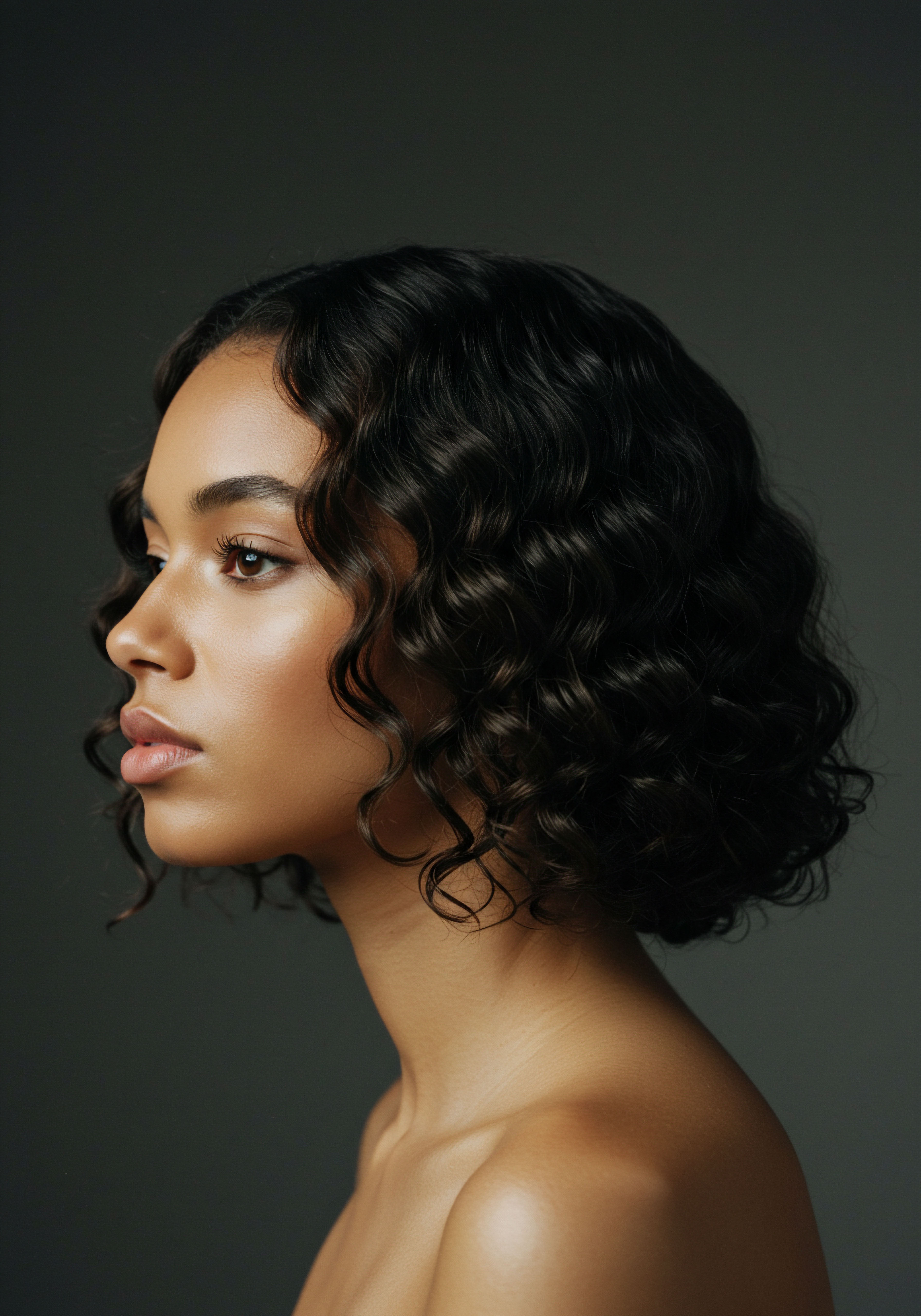
What Does Historical Hair Classification Reveal About Bias in Science?
The history of hair classification itself presents a complex and often controversial link to modern science. Early attempts to categorize human hair, particularly in the 19th and early 20th centuries, were sometimes intertwined with pseudoscientific racial theories. Systems developed by figures like Eugen Fischer, for example, aimed to classify hair by color and texture to assign “racial value,” often comparing it to a blonde-haired Nordic “ideal”. These methodologies, rooted in a historically limited and racist view of human categorization, conflated hair type with racial groups, perpetuating biologically dubious and discriminatory practices.
This historical misstep serves as a powerful reminder for modern hair science. While contemporary trichology accurately classifies hair based on its structural characteristics (e.g. curl pattern, porosity, density), it is crucial to decouple these scientific descriptions from archaic, socially constructed racial classifications. The field of trichology, formally recognized in 1902, has since moved toward a more inclusive and evidence-based understanding of hair, yet the historical biases underscore the importance of respectful inquiry and the continuous questioning of established norms within scientific study.
The evolution of hair science reflects a journey from intuitive ancestral practices to rigorous molecular understanding.
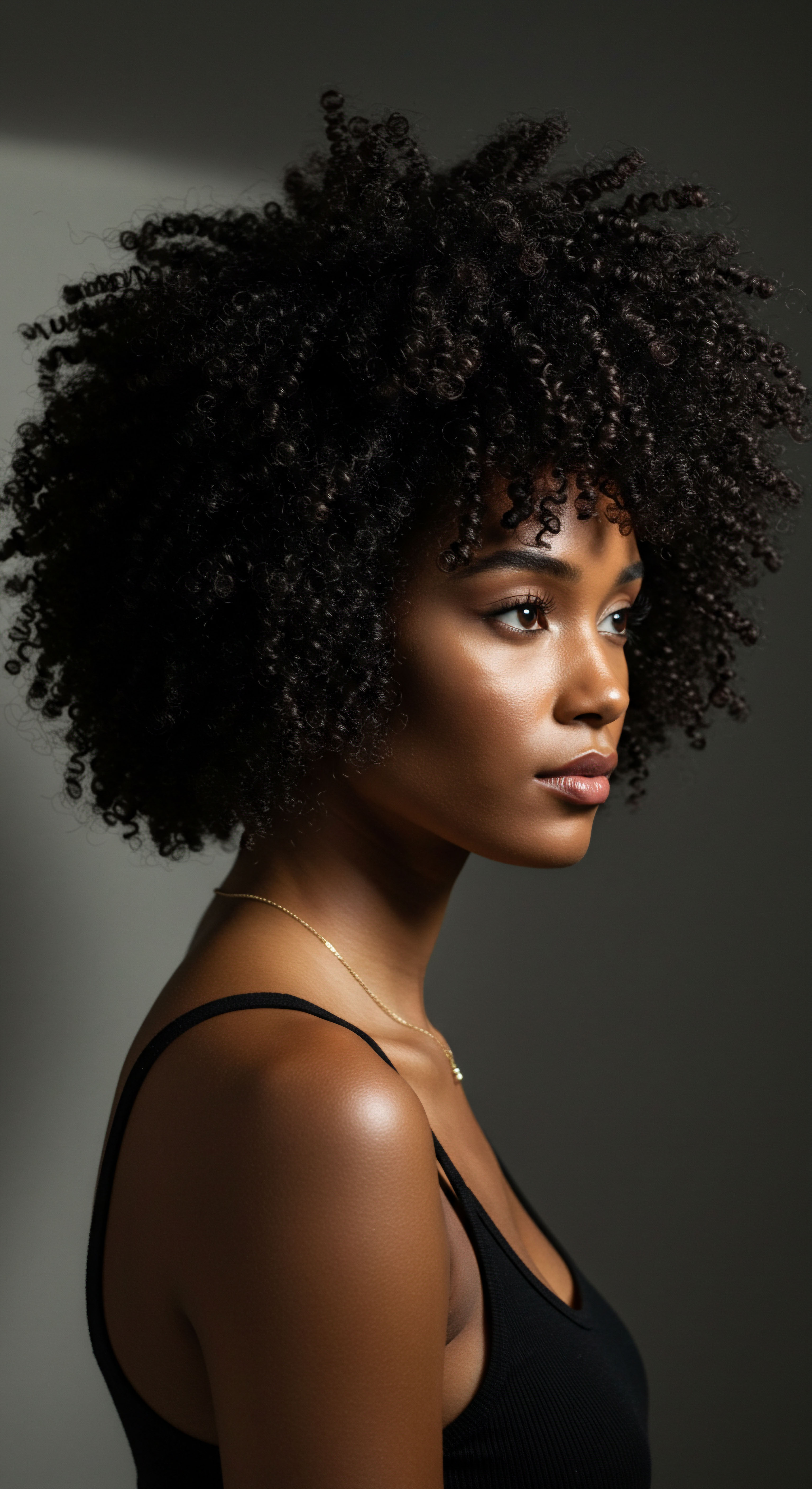
The Socio-Psychological Echoes of Hair Practices
Hair has always been a potent symbol of identity, status, and social norms. Historical hair practices were not just about physical appearance; they carried deep socio-psychological weight. For many communities, particularly those of African descent, hair served as a visual marker of heritage, resilience, and resistance against oppressive beauty standards. The meticulous care involved in traditional styling, often communal, fostered bonds and transmitted cultural knowledge across generations.
This cultural significance has tangible effects on well-being. The act of caring for textured hair, through practices passed down, can be a grounding experience, connecting individuals to their lineage and fostering a sense of self-acceptance. Conversely, the historical pressure to conform to Eurocentric beauty ideals often led to practices like chemical straightening, which, while offering a different aesthetic, also carried significant health risks, including hair breakage and scalp damage. Modern psychological research on body image and self-esteem frequently points to hair as a central component of personal identity, affirming the profound impact of these historical narratives on contemporary self-perception.

How Do Modern Diagnostic Tools Validate Ancient Hair Health Beliefs?
The emergence of modern diagnostic tools in trichology offers a fascinating lens through which to examine ancient hair health beliefs. For centuries, observations of scalp condition, hair luster, and hair shedding were the primary indicators of hair health. Today, dermatologists and trichologists employ advanced techniques to assess hair and scalp, including ❉
- Trichoscopy ❉ A non-invasive method using a dermatoscope to examine the scalp and hair follicles at high magnification, revealing subtle signs of inflammation, miniaturization, or damage.
- Hair Mineral Analysis ❉ While debated for diagnostic accuracy in some contexts, it can offer insights into long-term exposure to certain elements or nutritional deficiencies, echoing ancient concerns about diet and environment.
- Biopsy ❉ In cases of severe hair loss, a scalp biopsy provides a microscopic view of the hair follicles and surrounding tissue, allowing for precise diagnosis of conditions like scarring alopecias.
These tools allow for a scientific validation of the observations made by our ancestors. For example, ancient healers who prescribed herbal rinses for an irritated scalp were intuitively addressing inflammation. Modern trichoscopy can now confirm reduced inflammation at the follicular level following the application of certain anti-inflammatory botanicals.
The belief in certain foods promoting hair strength can now be correlated with the presence of essential vitamins and minerals in the hair shaft, detectable through advanced analytical chemistry. This confluence of historical wisdom and modern precision offers a comprehensive understanding of hair health.
A compelling illustration of this interplay between historical practice and modern scientific scrutiny lies in the widespread use of traditional hair styling methods among Black women and the subsequent recognition of their potential dermatological consequences. Historically, styles such as tight braids, cornrows, and extensions have been celebrated for their aesthetic appeal, their role in cultural identity, and their perceived protective qualities for textured hair. However, rigorous scientific studies have revealed a less benign side to these practices when applied with excessive tension or maintained for extended periods. A significant body of research, including a study published in the Journal of the American Academy of Dermatology, confirms a strong association between scalp-pulling hairstyles and the development of Traction Alopecia.
This condition, characterized by hair loss due to chronic pulling on the hair follicle, affects an estimated one-third of African American women, making it the most common form of hair loss within this demographic. The persistent tension can lead to inflammation around the hair follicle, eventually causing irreversible scarring and permanent hair loss in its advanced stages. This finding is particularly salient because it highlights a complex dynamic ❉ practices deeply rooted in cultural heritage, often intended to protect hair, can paradoxically contribute to hair loss when the biomechanical limits of the hair follicle are exceeded. It compels a dialogue that honors cultural expression while simultaneously advocating for scientifically informed modifications to ensure the long-term health of the hair and scalp.
| Historical Practice Regular Hair Oiling (e.g. Ayurvedic) |
| Perceived Benefit/Cultural Role Nourishment, shine, growth. |
| Modern Scientific Insight/Caveat Penetrates hair shaft, reduces protein loss, provides fatty acids. |
| Historical Practice Tight Braiding/Extensions |
| Perceived Benefit/Cultural Role Protective styling, cultural identity, length retention. |
| Modern Scientific Insight/Caveat Risk of traction alopecia due to chronic follicular tension. |
| Historical Practice Natural Plant Dyes (e.g. Henna) |
| Perceived Benefit/Cultural Role Color change, hair strengthening. |
| Modern Scientific Insight/Caveat Binds to keratin, avoids harsh chemicals, but limited color range. |
| Historical Practice Hair Removal (e.g. sugaring) |
| Perceived Benefit/Cultural Role Hygiene, aesthetics. |
| Modern Scientific Insight/Caveat Effective exfoliation and hair removal via adhesion and pulling. |
| Historical Practice Modern science often validates the underlying principles of historical practices, while also identifying potential risks. |
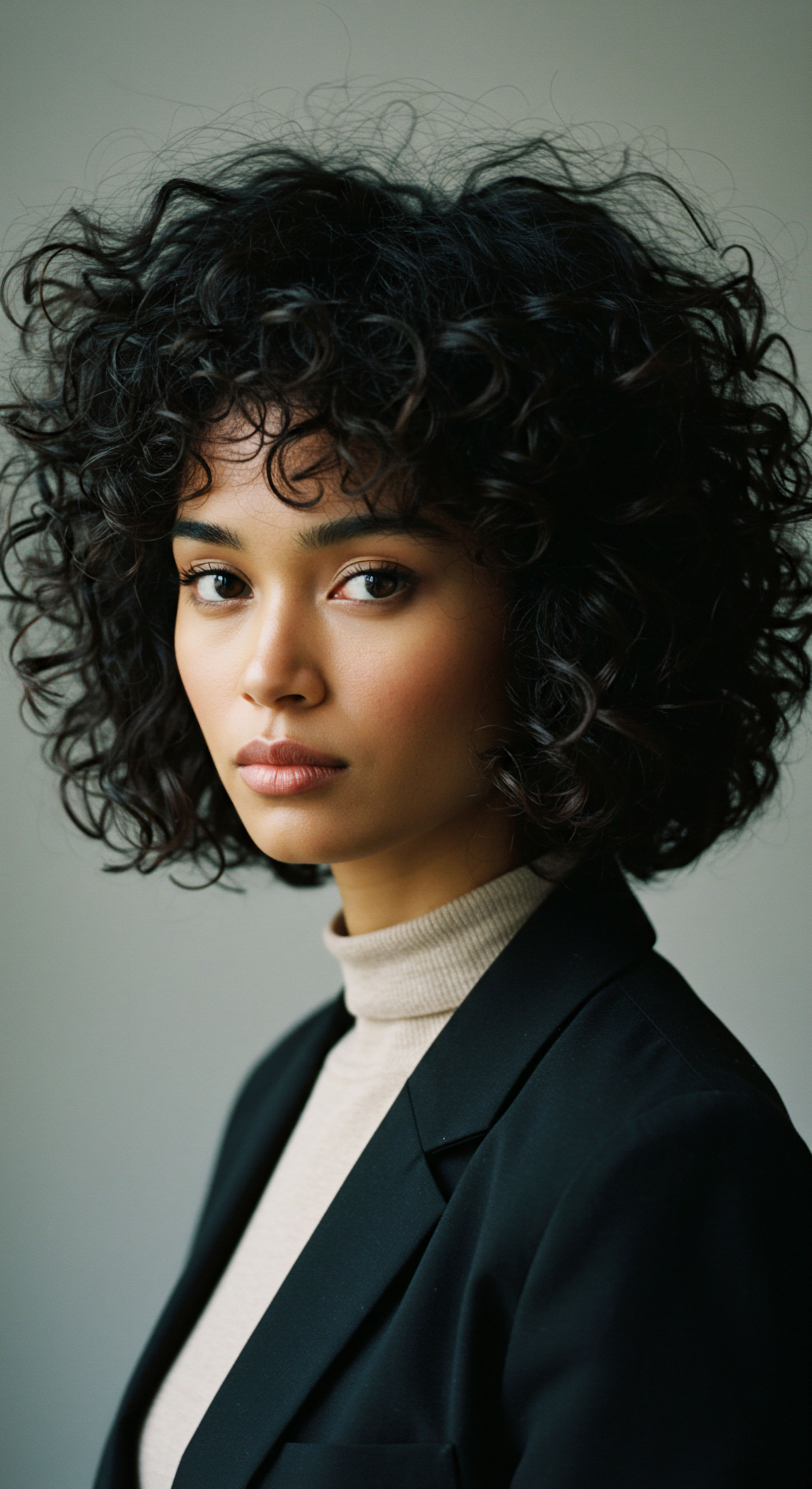
Reflection
As we draw our exploration to a close, the threads of history and the precision of science do not merely meet; they dance in a delicate, continuous rhythm. Our journey through ancient practices and modern discoveries reveals a profound truth ❉ the human relationship with hair is an enduring testament to ingenuity, adaptation, and an intrinsic desire for well-being and expression. The gentle hum of ancestral wisdom, once dismissed as mere folklore, now finds its resonance in the precise language of chemistry and biology. This conversation across centuries, between the intuitive hand of the past and the analytical gaze of the present, continues to shape our understanding of textured hair, reminding us that its care is a living legacy, constantly evolving yet forever rooted in a deep, knowing connection.
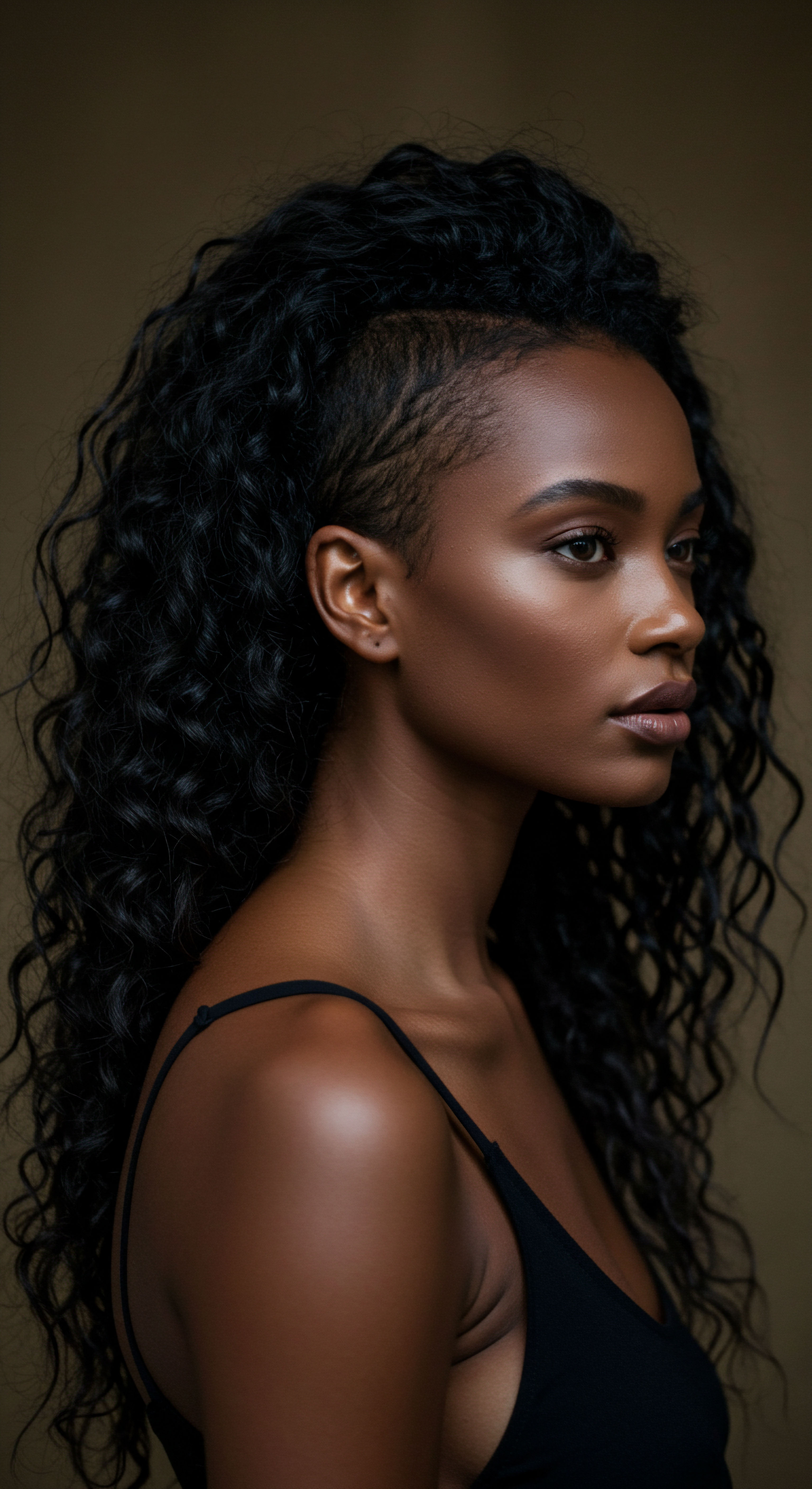
References
- Audrey Davis-Sivasothy. The Science of Black Hair ❉ A Comprehensive Guide to Textured Hair Care. MahoganyRoots, 2011.
- Gabriela Hernandez. Classic Beauty ❉ The History of Makeup. Schiffer Publishing, 2011.
- Lisa Eldridge. Face Paint ❉ The Story of Makeup. Abrams Image, 2015.
- Lauren Stowell. The American Duchess Guide to 18th Century Beauty ❉ 40 Projects for Period-Accurate Hairstyles, Makeup and Accessories. F+W Media, 2017.
- Richard Corson. Fashions in Makeup ❉ From Ancient to Modern Times. Universe Books, 1972.
- Madeleine Marsh. Compacts and Cosmetics ❉ Beauty From Victorian Times to the Present Day. Shire Publications, 2007.
- Sarah Jane Downing. Beauty and Cosmetics ❉ 1550-1950. Shire Publications, 2014.
- Philippe Walter et al. Ancient Egyptian Hair Gel ❉ New Insight into Ancient Egyptian Mummification Procedures through Chemical Analysis. Journal of Archaeological Science, 2011.
- N. C. McCreesh, A. P. Gize, and A. R. David. Ancient Egyptian Hair Gel ❉ New Insight into Ancient Egyptian Mummification Procedures through Chemical Analysis. Journal of Archaeological Science, 2011.
- Victoria Billero, Mariya Miteva. Traction Alopecia ❉ The Root of the Problem. Clinical, Cosmetic and Investigational Dermatology, 2018.
- Khumalo, N. P. et al. Hair practices and their relation to central centrifugal cicatricial alopecia in African women. Archives of Dermatology, 2007.
- Anthony Synnott. Shame and Glory ❉ A Sociology of Hair. British Journal of Sociology, 1987.
- Sherrow, Victoria. Encyclopedia of Hair ❉ A Cultural History. Greenwood Press, 2006.
- Audrey Davis-Sivasothy. The Science of Black Hair ❉ A Comprehensive Guide to Textured Hair Care. Google Books.
- JaypeeDigital. Trichology ❉ An Overview.
- William R. DeGroot. Beauty and the Beast ❉ The History of Cosmetology.
- Umberto Eco. The History of Beauty. Rizzoli, 2004.
- A’lelia Bundles. On Her Own Ground ❉ The Life and Times of Madam C.J. Walker. Scribner, 2001.
- Alfred Swaine Taylor and Thomas Stevenson. The Principles and Practice of Medical Jurisprudence. J. & A. Churchill, 1883.
- Victor Balthazard and Marcelle Lambert. Le Poil de l’Homme et des Animaux. Masson et Cie, 1910.
- Eugen Fischer. Die Rehobother Bastards und das Bastardierungsproblem beim Menschen. Gustav Fischer, 1913.
- Christina Russell. The Impact of Hair Type, Hair Sample Weight, External Hair Exposures, and Race on Cumulative Hair Cortisol. Frontiers in Psychology, 2021.
- Carol Delaney. Untangling the Meanings of Hair in Turkish Society. Anthropological Quarterly, 1994.
- Raymond Firth. We, the Tikopia ❉ A Sociological Study of Kinship. George Allen & Unwin, 1936.
- J. B. Lambert, et al. Ancient Hair Dyes ❉ Chemical Analysis of Hair from Ancient Greek and Roman Human Remains. Journal of Archaeological Science, 2009.
- Pravek Kalp. Traditional Ayurvedic Hair Oil ❉ Benefits & Key Ingredients. Pravek Kalp, 2024.
- Shirin Mehrotra. Understanding Hair Oiling ❉ History, Benefits & More. Healthline, 2021.
- Emma Sundh. Vintage Hairstyles ❉ Simple Steps for Retro Hair with a Modern Twist. Cico Books, 2015.
- Suzanne E. Shapiro. Nails ❉ The Story of the Modern Manicure. Prestel, 2014.
- Adrienne L. McLean. Costume, Makeup, and Hair. University of California Press, 2007.
- Lindy Woodhead. War Paint ❉ Madame Helena Rubinstein and Miss Elizabeth Arden, Their Lives, Their Times, Their Rivalry. Virago, 2003.
- Kate De Castelbajac. Face of the Century ❉ 100 Years of Makeup and Style. Rizzoli, 1995.
- Penny Dade. All Made Up ❉ 100 Years of Cosmetics Advertising. Aurum Press, 2002.
- Julian Walker. The Finishing Touch ❉ Cosmetics Through the Ages. British Museum Press, 2006.